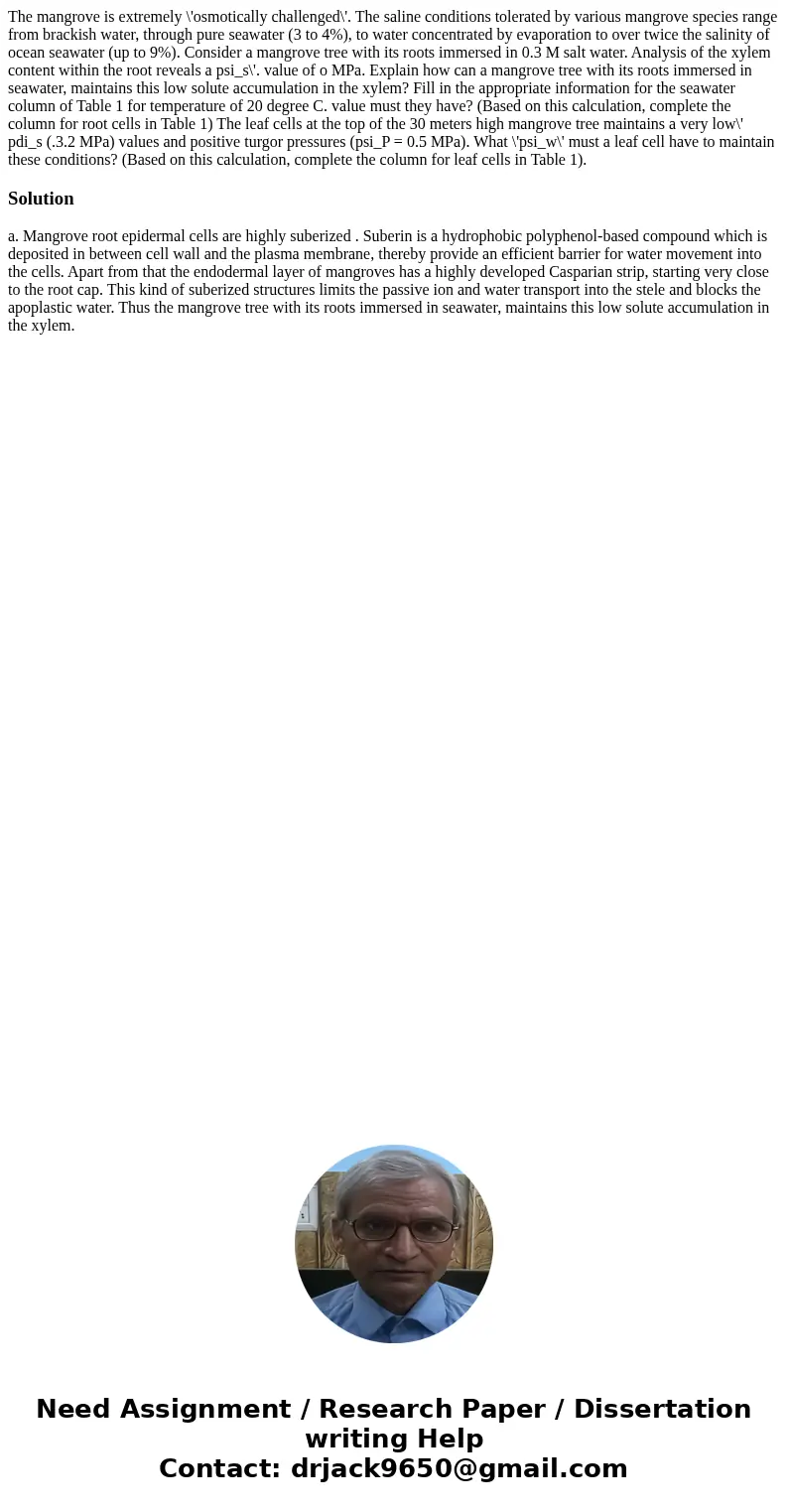The mangrove is extremely osmotically challenged The saline
The mangrove is extremely \'osmotically challenged\'. The saline conditions tolerated by various mangrove species range from brackish water, through pure seawater (3 to 4%), to water concentrated by evaporation to over twice the salinity of ocean seawater (up to 9%). Consider a mangrove tree with its roots immersed in 0.3 M salt water. Analysis of the xylem content within the root reveals a psi_s\'. value of o MPa. Explain how can a mangrove tree with its roots immersed in seawater, maintains this low solute accumulation in the xylem? Fill in the appropriate information for the seawater column of Table 1 for temperature of 20 degree C. value must they have? (Based on this calculation, complete the column for root cells in Table 1) The leaf cells at the top of the 30 meters high mangrove tree maintains a very low\' pdi_s (.3.2 MPa) values and positive turgor pressures (psi_P = 0.5 MPa). What \'psi_w\' must a leaf cell have to maintain these conditions? (Based on this calculation, complete the column for leaf cells in Table 1). 
Solution
a. Mangrove root epidermal cells are highly suberized . Suberin is a hydrophobic polyphenol-based compound which is deposited in between cell wall and the plasma membrane, thereby provide an efficient barrier for water movement into the cells. Apart from that the endodermal layer of mangroves has a highly developed Casparian strip, starting very close to the root cap. This kind of suberized structures limits the passive ion and water transport into the stele and blocks the apoplastic water. Thus the mangrove tree with its roots immersed in seawater, maintains this low solute accumulation in the xylem.

 Homework Sourse
Homework Sourse